OUAHIGOUYA, BURKINA FASO
The cradle of mankind is also the cradle of healthy movement and posture.
It has become increasingly clear from the archaelogical record that Africa is the cradle of mankind. In modern times, Africa is the place that has the best-preserved primal posture. Visitors marvel, appropriately, at the carriage of women carrying large loads on their heads, and at the elegant gait of men and women as they traverse long distances to go about their business. It’s a wise move to follow behind someone who you perceive to have good posture / movement mechanics, turn your brain off (and sometimes on) and let each part of you—legs, torso, neck, arms—mimic the corresponding part in your “teacher.” This was a technique I used to learn many details of healthy movement.
A very effective technique for learning details of gait is to follow behind excellent models, like I'm doing here in Burkina Faso in 1998.
Good posture takes healthy moulding and healthy modeling
Healthy moulding means that babies and young children are handled in ways that maintain and reinforce their healthy and stable baseline torso structure. Often baby furniture like strollers and car seats distort this natural baseline by rounding the spine and tucking the pelvis, priming our children for a lifetime of unhealthy body positioning. This common rounded shape comes not from a lack of attention to the basics of our children’s health, but a misunderstanding of the natural shape of babies’ skeletons.
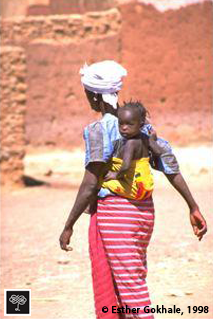
This baby is being “molded” to have healthy posture while being carried on the back of her mother.
Healthy modeling is when young people mimic older people. We are constantly modeling behaviors, although we are rarely conscious of this. Young children take in everything they see and hear, and will consciously and unconsciously mimic and repeat all these modeled behaviors (such as speech, gestures, emotions, relationships, and ideas). These will eventually form the child’s culture; posture is just one small aspect of culture, but as it plays such an important role in health and mobility during one’s lifetime, it is important to make sure we model good posture for children to absorb.
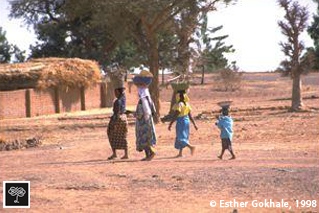
A young girl walks behind a group of older women carrying loads on their heads, modeling them by carrying her own minor load.
Simplicity works best
The best baby carrier is not a high-tech or expensively designed western device—it is a piece of cloth. Using an ordinary strip of fabric allows both the baby and the person carrying the baby to maintain good posture. Securing the baby to the back in this way ensures that the hips are spread wide and knees are raised, the back is not rounded, and the pelvis is not tucked. It can also serve as a reminder to the adult to keep a flat back. Having the weight of the baby so close to the center of the body and centered (rather than carried by only the left or right side) keeps the adult from distorting her frame, or using delicate muscles like those of the wrist and forearm, as often happens when trying to carrying around an unwieldy basket or car seat. It also leaves the arms free and unhindered to use for other tasks.

I was taught how to carry my second baby on my back in Bures-sur-Yvette in France by my Burkina friend Kouka.
The coolest garment turns out to also be a piece of cloth, wrapped as a skirt!
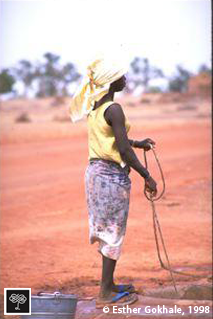
A simple piece of cloth serves many purposes, including a skirt that is very flattering to the human form.
Healthy posture gives you dignity and self-possession
Having the shoulders back facilitates chest breathing, which gives you a big ribcage and more lung capacity.
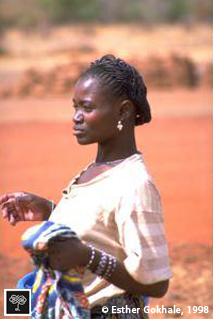
A beautifully poised young Burkina woman drying her laundry (this photo was not posed). Notice the elevation of her sternum (the highest bone in the chest), her elongated and straight neck, and the downward angle of her chin.

A Burkina carpenter I met at a bus stop. He insisted I should take his picture—and I’m glad he did! Notice his expansive chest (on account of his well-developed ribcage, rather than over-developed pecs), his elongated neck, anteverted pelvis, and his self-confident air.
Not everyone has tight muscles
One time I went to consult a bone setter near Ouahigouya. He was so surprised to find a muscle knot in my shoulder—everybody around had to come and check the “dingani” he had found. I thought to myself, “Wow, where I come from, everybody has ‘dingani.’”
Hip-hinging is a natural way to bend when you need to work at ground level
Although hip-hinging looks like a painful move to back pain sufferers in modern societies, this is a natural way for people of all ages to bend without back pain. It does require hamstring flexibility, and hip-hinging itself is the best way to cultivate that flexibility! In Burkina Faso, people hip-hinge for long periods to cook, clean, wash, do pottery, and more.
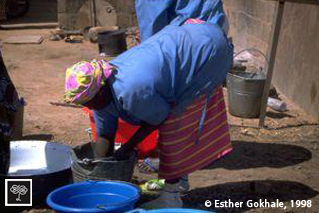
Woman hip-hinging to do laundry in Burkina Faso.
Have you been to Burkina Faso or other part of Africa? Have you admired or learned from what you observed?
This post is part of a series about posture lessons learned from Esther's travels. See the next installment, about Brazil, here.


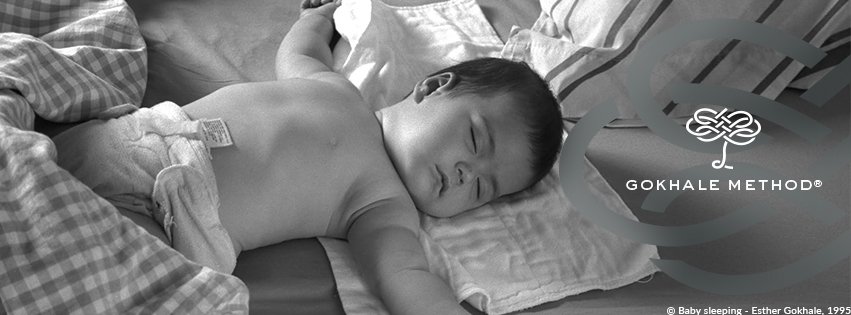
Comments
Thanks for all your posts!
Thanks for all your posts! They are always great motivation. I have two questions about baby carrying and one about car seats.
1) Would you consider doing a short “how to” video on how to wrap your baby on your back? I’m on my third child so I’m used to wrapping and “wearing” babies but I’m curious about the specific technique you mention. I want to do it, but I also want to be sure I’m doing it right.
2) How do women carry babies who don’t hold their heads up yet? Is there any way to front carry that is not super strenuous? There are a ton of western techniques to strap a baby to your front which works great for breast feeding, but I’m curious what people do in posture conscious cultures.
3) Are there ANY car seats or booster seats you have seen that you might recommend as posturally better than others? Unfortunately we live in an area where it’s a 45 minute drive to do almost anything so my kids spend way more time in the car than I like.
Just seen the post and would
Just seen the post and would really love to hear your answers to the above. As a lot of new mothers I didn't have much knowledge about the posture-aware baby handling and I only learned babywearing the western way, which is pretty secure and tight, but encourages the baby to tuck their pelvis. Probably also because of that our son (12mo) now sits and sometimes even stands with a tuck and it's quite a hard habit to break.
So I really look forward to your answer for some more information. If you already wrote/posted about it, I'd be glad of a reference, too.
This is a great post Esther.
This is a great post Esther. I have a question about the sternum position. I think that in my efforts to anchor the ribs I may have dropped the sternum. Can you explain how to rib anchor and still keep the sternum lifted? Thanks.
Yes, dropping the bottom of
Yes, dropping the bottom of the ribcage will result in the entire ribcage shifting position including the sternum. The rising of the sternum happens slowly over years because of a changed breathing pattern (breathing into the chest), because bones are capable of changing their shape over time, and because Louis' angle (look this up on the internet) is particularly amenable to a change of shape.
Thank you for all the
Thank you for all the wonderful information and reminders. I immediately sit with a better posture as I read your emails (and long afterwards)! :) Such a relevant topic again! But also a bit stressful... It would be wonderful, if you could share any tips on how to encourage a healthy posture of a toddler, who, of course, spends some time in a stroller and inevitably in a carseat. I am not sure if this is even a valid question, but as a mom, who wants the best for her child, I am a bit concerned and would be ready to make needed adjustments. I would also like to know, just like the other mom who commented, whether there are some carseats that are promoting a good posture instead of harming it. Thank you so much! Greetings from Germany, Jurgita
Don't get stressed! Things
Don't get stressed! Things don't have to be perfect to be good! Human beings are resilient. We work with 100 year olds and are able to make big improvements - it's okay to leave some things to later for improvement...
Car seats:
Strollers:
General:
Thank you Esther! Your
Thank you Esther! Your response made me very hopeful. I am looking forward to your future newsletters and any related information. What you share is a blessing to the world. All the very best!
I only realized the last part
I only realized the last part of the answer! I really hope your condition is temporary and healing. I would be happy to help as I see a great importance in your work. Although my free time is quite limited, I would certainly be more than happy to lend a hand.